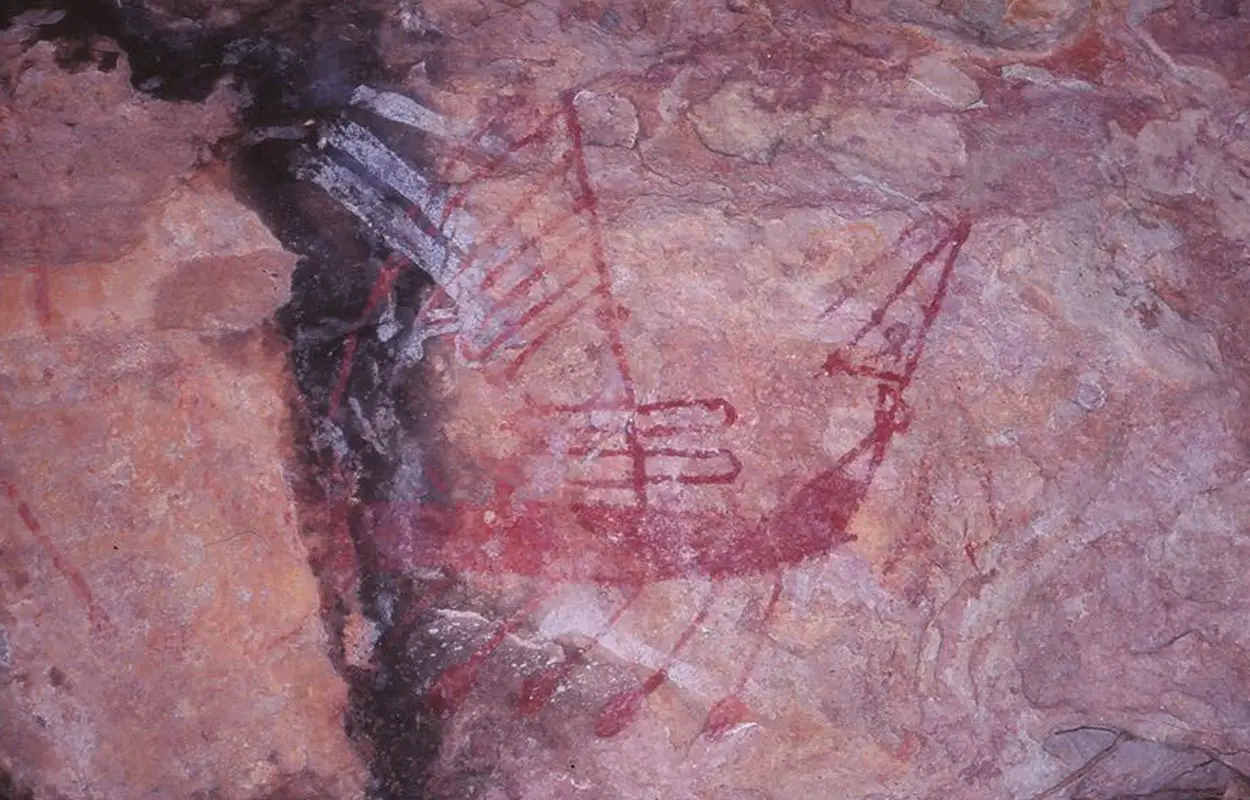Archaeologists from Flinders University have identified Moluccan vessels from Indonesia in rock art paintings found at Awunbarna, Arnhem Land, Australia.
According to the researchers, these findings are the first-ever archaeological proof of visitors from Southeast Asia originating outside of Makassar on Sulawesi arriving in mainland Australia.
Two watercrafts depicted in the rock art feature motifs that appear on the Moluccan types of Southeast Asian vessels. They are distinct from other seafaring cultures from the region, enabling the researchers to confirm their identity.
As well as their distinctive shape and configuration, both boats appear to display triangular flags, pennants, and prow adornments. By comparing these two depictions with historically recorded watercraft from islands in Southeast Asia, the researchers suggest that they probably came from eastern Maluku Tenggara in Indonesia.
Dutch explorers in the Moluccas reported as early as the mid-seventeenth century that inhabitants from the islands regularly sailed to the north coast of Australia.
The rock art provides compelling new evidence of undocumented interactions between Indigenous people from Awunbarna in Arnhem Land and visitors from the Moluccas.
Dr Mick de Ruyter, from Flinders University, said: “These motifs support existing ideas that sporadic or accidental voyages from Indonesia to the Australian coastline took place before or alongside regular trepang fishing visits.”
Dr Daryl Wesley, said: “The drawings we have identified don’t appear to represent any known European or colonial watercraft types. Similar “canoes” are represented in rock art elsewhere on Australia’s northern shore, but none appear with similar details to those at Awunbarna. The nearest candidate is the most elaborate Indigenous Australian vernacular watercraft, the canoes of the Torres Strait Islands.”
“This identification of Moluccan craft has significant implications for the reasons mariners from these islands may have been on the northern Australian coastline, and subsequently for the intercultural encounters on the Arnhem Land coast,” added Dr Wesley.
https://doi.org/10.1007/s41636-023-00390-7
Header Image Credit : Flinders University





